How to get rid of kozheed beetle in the apartment
Content
- Kozheed beetle
- Kozheed Museum
- Kogeeda larvae
- Kozheed Smirnova
- Skin bites
Kozheed beetle belongs to the order of coleoptera insects. Presented by more than 600 species, many of which are pests of food stocks, herbaria, exhibits of museums and libraries. In the last decade, kozheedy beetles are increasingly found in apartments and some species have become synanthropic insects.
Appearance and habitat conditions
Kochoeda are widespread, except for the tundra. About 40% of species are dangerous pests. They prefer dry and warm climate, but they feel good in heated premises. The following types of kozheedov are common on the European territory:
- motley;
- museum;
- norichnikovy;
- Smirnova;
- carpet;
- brown.
Food plasticity, the ability to go without food for a long time, the high activity in its search led to the fact that some species became synanthropic insects.
The oval body of the beetle has a convex back and is somewhat oblate from the ventral side. Hard elytra are painted in masking colors from light brown to black. Sizes - small, depending on the type of insect vary in the range of 1.3-12 mm.
The most common types of leather are easily identified by appearance:
- Carpet leather - a miniature brown bug, which, due to its tiny size, can feed on small organic garbage - pet hair, epidermis flakes, food crumbs.
- Kozheed Smirnova - an insect not exceeding 3 mm. It has a brown oval body.The beetle damages meat, dried fish, wool, linen, synthetic fabrics, paper. Medium-sized and older larvae cause particular harm.
- Kozheed spotted - larger than listed above. The size of the body of the beetle varies from 5 to 10 mm. It feeds on organic and inorganic food. Used in forensic science to determine the age of a corpse and thoroughly clean bones from the remnants of flesh in museums.
The surface of the elytra has outgrowths in the form of hairs and scales. In species with variegated color, the color is caused not only by the pigment of the chitinous cover, but also by the color of the hairs. Some kozheedov have constriction on the elytra of yellow or red color.
The head of the beetle is tightly pressed to the chest and pointing down or straight. Antennae clavate, consisting of different number of segments (4-11), attached at the edge of the forehead. The beetle can hide them in the groove on the cheeks, like in carpet skin or in the grooves located on the sides of the prothorax (in the museum leather).
Eyes have small size beetles, faceted. Facets are flat. A distinctive feature is the presence of a simple eye, which is located on the forehead.Not very good vision kozheed beetle compensates for the developed sense of smell. Attractants for some types of kozheedov is the smell of umbrella plants and food substrate.
Paws of five-segmented beetles. On the legs there are spurs, spines, hairs.
Sexual dimorphism is noted - in males the antennae are more pronounced and there are abdominal glands. During the summer period, motley kozheed, carpet kozheed, museum and norichnikovy in large numbers are found on the flowers of plants of the Rosaceae family or of umbrella plants. Adult insects of many species of kozheedov absorb juice and pollen from plants or do not feed at all.
The oral apparatus of the gnawing type in different species of beetles is represented by small mandibles of various degrees of development and structure. The wings of the majority are well developed and at rest completely hidden under rigid chitinous elytra.
The kozheedov beetles can be found in birds' nests, small animal burrows. Some species are necrobionts and eat the corpses of mammals, lizards. Cases of cannibalism are noted.
Interesting!
Thanatoreflex is developed in all species of beetles. With the threat or irritation of the body surface, the beetle presses the paws and antennae, turns back, pretending to be dead.If the irritation is severe, then the skincord may be in a state of stupor for 50-120 seconds. Some species have dissecting coloring.
Adult beetles are not afraid of sunlight, and most have around-the-clock activity, rising in the morning and evening hours.
What the larvae look like
Kozheeda beetle larva is worm-shaped with pronounced hairs of different lengths on the body and a brush of straight, hard hair on the last segment. The larva actively feeds, damaging all types of organic substrates - wool, hair, feathers, skin, cereals and grains, sausages, milk powder, etc. In the absence of a number of familiar food can eat synthetic materials. Larvae move rapidly and actively. They prefer to settle in a fleecy, rough fabric.
The kozheeda beetle larva does not like light, which is explained by the absence of chitinous cover and the imperfection of the water retention mechanism. At first, after emerging from the pupa, negative phototaxis is also observed in adult skinchips, since there is still little melanin in the chitinous cover that protects against UV rays.
The body of the larva is oval, fusiform. The legs consist of 5 shortened segments. The claw merges with the leg segment.
The entire body of the larva is covered with various hetas in appearance, length and color, represented by:
- hairs;
- setae;
- scales.
Photo kozheed Smirnova demonstrates an adult and larvae at different stages of development.
Ovoid-shaped egg, covered with a dense shell, which gradually turns yellow. Through the shell is visible developing inside the larva.
Reproduction and life cycle
Kozheeda beetles are insects with a complete transformation cycle. After fertilization, the female lays eggs in small portions in hidden places: crevices, in pile of tissues, on the bodies of dead insects. Oviposition lasts from 2 to 10 days, after which the insect dies. One mature female lays no more than 100 eggs for the entire life span.
Depending on the temperature and humidity, the larvae leave them after 2-55 days. They prefer places with low light or no light. Unlike adults, which are oriented in choosing a partner and searching for food for olfactory receptors, the larvae are guided by tactile sensations.Developed mechanoreceptors dictate the choice of the surface on which she prefers to be.
Actively moving and feeding, the larva goes through several stages of molting. The rate of conversion depends on temperature and humidity:
- If the comfort humidity varies over a considerable interval (40-90%), then the temperature comfort zone is much more rigid and amounts to 20-30 ° C;
- In case of temperature disturbance, the larva may be at rest for some time, which lengthens the larval stage;
- Before pupation the locomotor activity of the beetle larvae decreases.
In some species of kozheedov, the last skin of molting bursts, and the pupa remains in it. For others, it is reset completely. A cocoon-unprotected grub gnaws off the course, ending with a chamber in which it undergoes a transformation process. Some pupae gnaw out a pupation chamber, even in plaster, bone, and concrete. The pupal stage lasts from 4 days to 20 days. After the metamorphosis is completed, the young beetle is still in the chamber for some time and leaves it only after 2-3 days.
In most species of kozheedov beetles, the whole life cycle is 1 year, but under adverse conditions it can last up to 2 years.The larval stage is longer in duration than the life span of the imago.
Interesting!
Even within one offspring, under favorable climatic conditions and the availability of food, a cycle of metamorphosis of varying length is observed. What is the reason, scientists can not say for sure.
In each generation of kozheedov beetles, up to 4% of the larvae are found, which, even if there is enough food, do not stay in one place, but crawl away further, spreading the infection.
What are dangerous kozheedy for humans
Those who are faced with kozheedom, and especially with its larva, can not say that the "acquaintance" pleasant. In places of infection, the insect leaves not only the spoiled thing or food, but also the smallest pea of excrement, the hides after molting. All this can cause an allergic reaction.
The presence of pathogenic microbes on the washings from the chitinous cover and inside the intestine was not detected. Although this issue is still being studied. It is allergens that are dangerous to humans.
Skin bites have not been confirmed, but it is possible that in some cases the larva may bite. People complain of typical symptoms.A local injury appears on the human skin, causing hyperemia, swelling, and itching. Doctors tend to consider this a reaction of the body to an alien protein in the form of dermatological manifestations, and not the result of a bite. Bite beetles living flesh will not. Human skin is of no interest to them. Larvae use the skins and dense media as an object to create a pupation chamber.
Ways of penetration and methods of struggle
During the summer period, kozheedy beetles get into the apartment through open doors and unprotected windows. Objects and foodstuffs infected with insects can also be a source of colonization of the flat by skin-eaters. The causes of insects in the apartment are different. To get rid at home of the pest is necessary:
- do general cleaning;
- check the stocks of products and things from leather, fur, natural fabrics.
To find out where the insects come from in the apartment, one should carefully check the grain, crackers, flour bought by weight. Carefully inspect herbaria, zoological collections.
How to deal with a pest:
- Before deciding how to get rid of kozheed in the apartment, you need to find placeswhere the greatest number of beetles and larvae is noted. Kozheed larvae hide in the pile of the carpet, in the crevices and under the baseboards of the house.
- Before you take out the larvae in kitchen cabinets, clothes, furniture, you must first clean all things of contamination, get rid of products, papers, books spoiled by beetles. Wet cleaning and a vacuum cleaner will help fight pests that have infected the house.
- Low temperatures (below 12 ° C) prevent skin infections. To withdraw kozheed, apply freezing for 8-10 hours at a temperature of - 15 ° C.
- An effective means of fighting the beetle larvae should be used to treat all sites of their intended localization with boric acid powder. The substance must be scattered in secluded places where larvae may appear.
The removal of insects by folk remedies is a more benign method and does not require large financial expenditures. Boric acid denatures proteins of unprotected chitinous larvae, getting into the intestines of adult beetles, causing their death.
It is recommended to use dusts and solutions of insecticides, aerosols against synanthropic insects. Repellent agents are useless when dealing with kozheedami.Employees of the disinsection service may advise the most effective drug, depending on the type of beetles. Processing is carried out taking into account the physiology and life cycle of the skin.


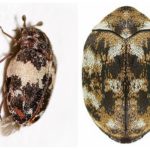
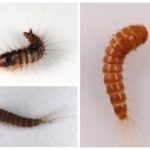

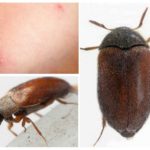
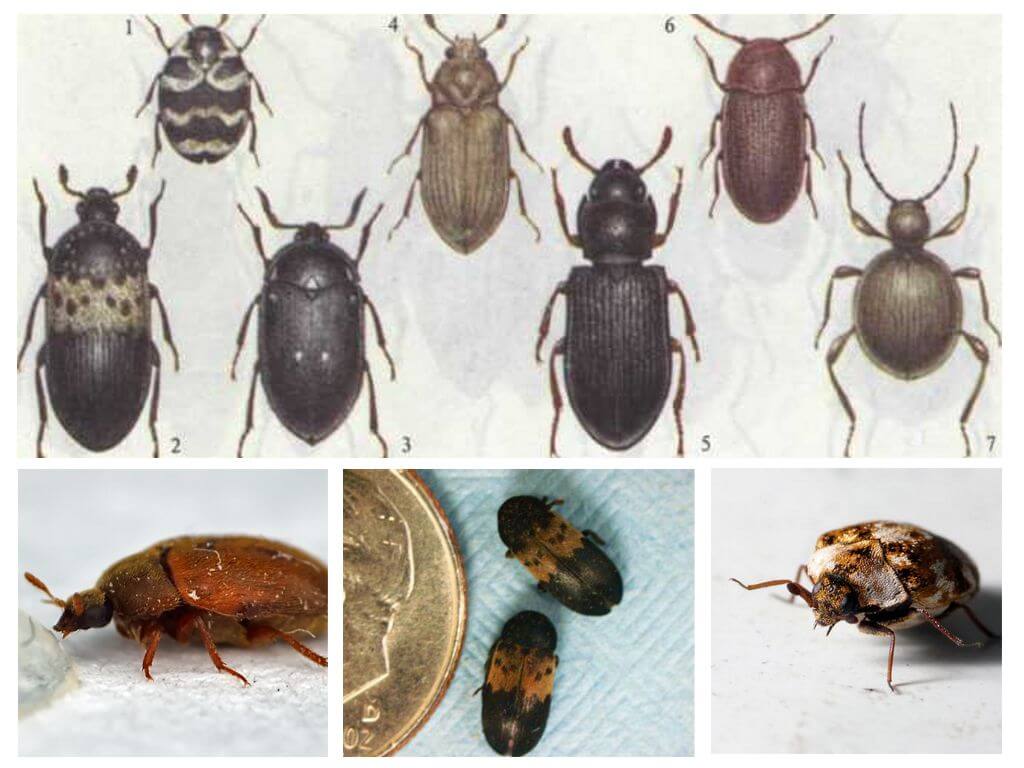
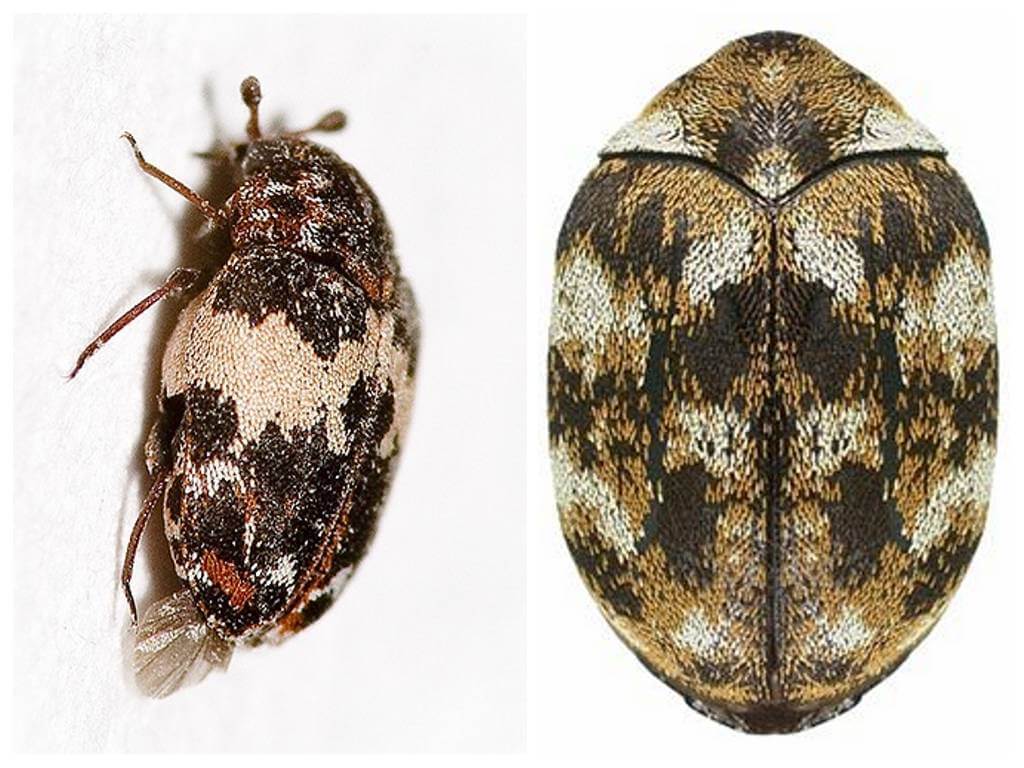
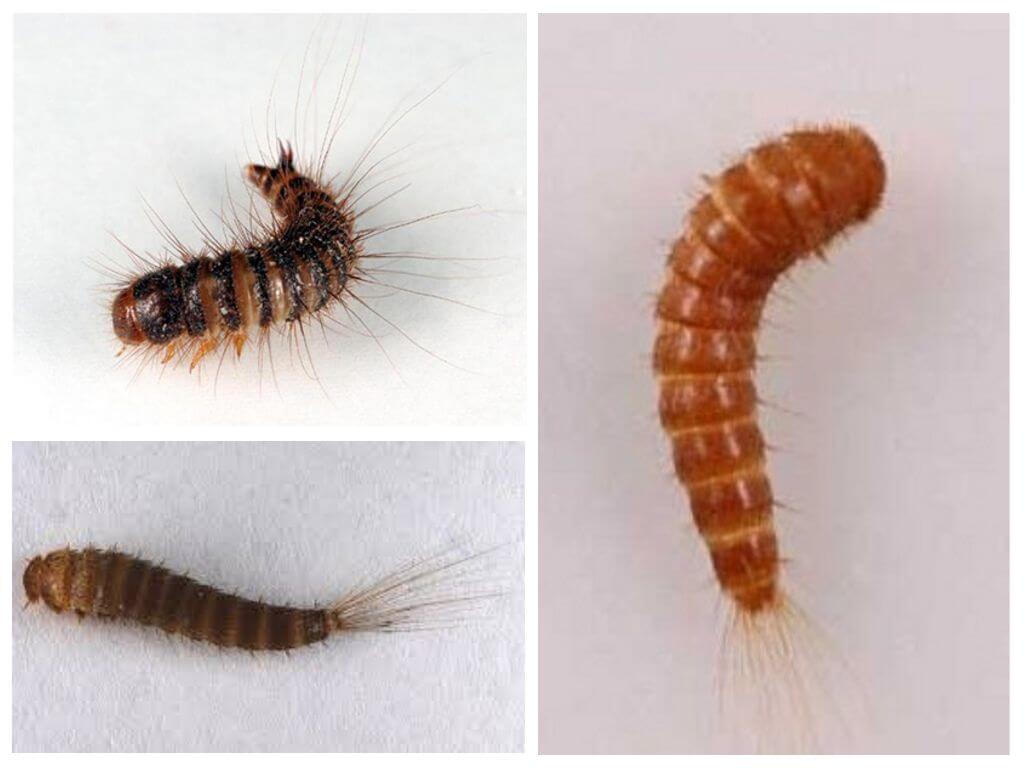
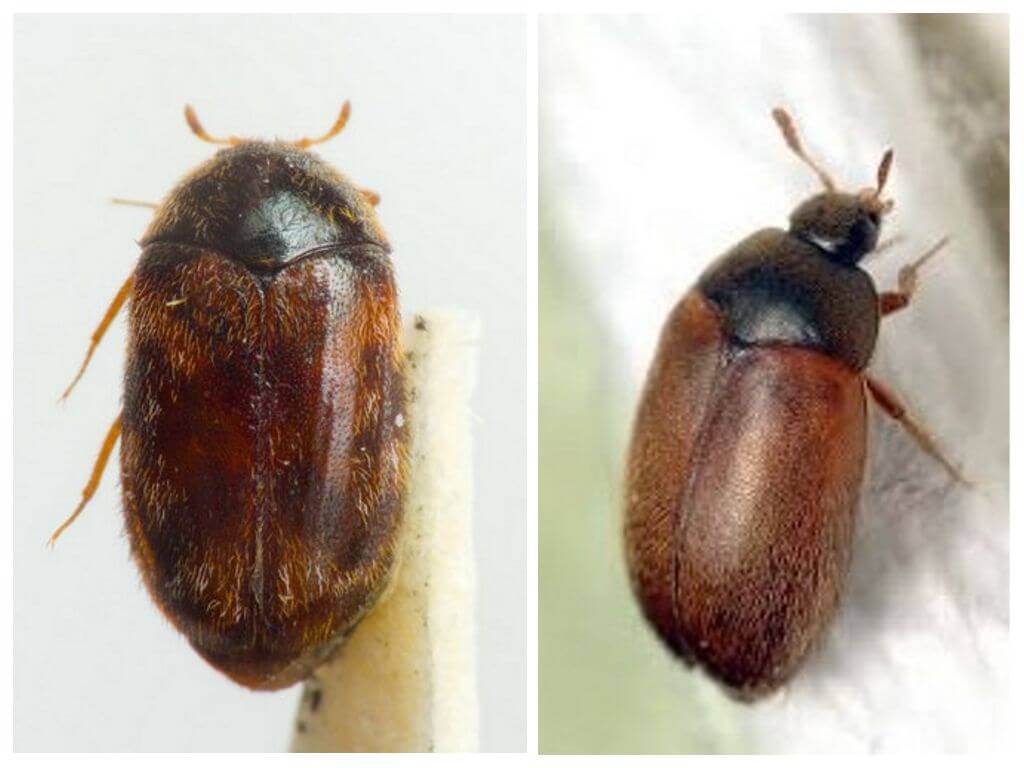
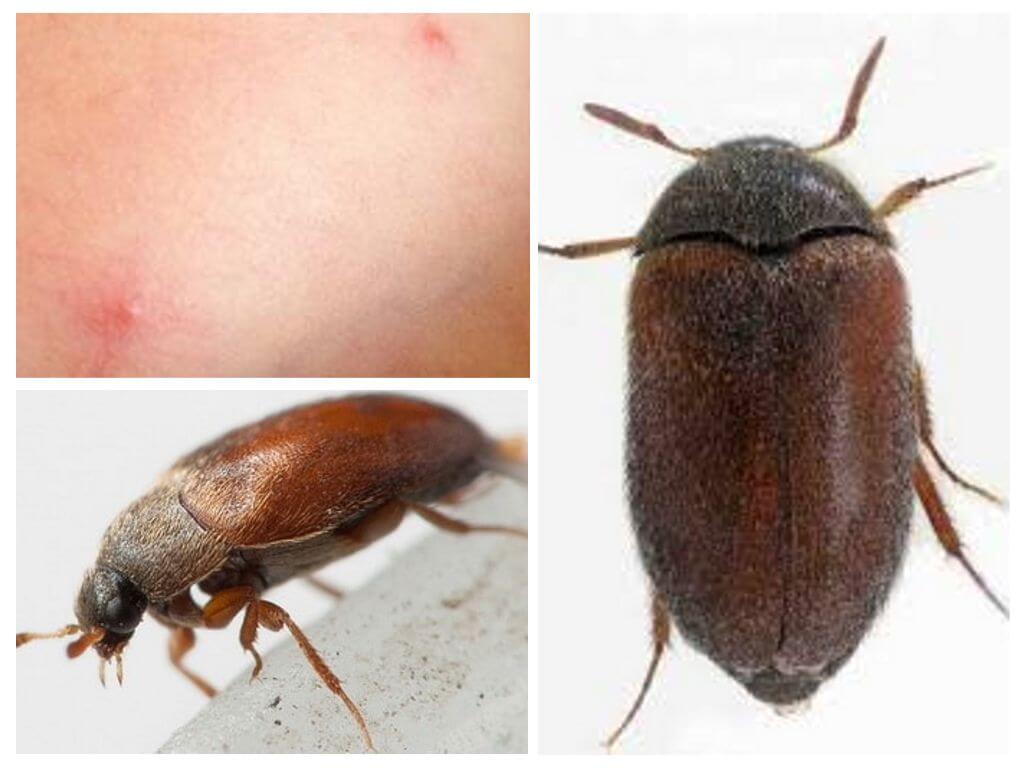

 (votes: 10, Average rating: 4.80 out of 5)
(votes: 10, Average rating: 4.80 out of 5)


